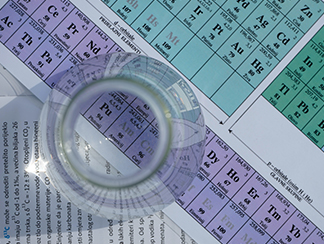课程描述
AP化学
AP全称是Advanced Placement,也就是我们俗称的大学预修课程。AP考试始于1955年由美国大学理事主办,初衷是为了让高中生有渠道接触到大学课程,并在有能力的情况下提前完成部分大学课程。其中一共有22个分类,包含了37节不同的学科。
AP化学做为一门理科的基础课,要求同学们在完全掌握基础的化学知识,化学原理和实验操作上,去学习大一化学所需要掌握的知识内容。
AP化学内容包括:
- 物质结构
- 物质状态
- 化学反应
- 描述性化学(化学实验)
从知识内容上我们就可以看出,化学是一门偏文的理科课程,所以如果同学们的记忆力特别好,就很容易获得高分。
而且化学是Science(理科)和工程专业的大一基础课程,也就是说化学是所有的理科学生的必修课,并会影响到未来的专业选择。

AP化学课程4分率
AP化学的4分以及4分以上的概率为百分之26,也就是说有四分之一的学生有机会吧AP化学转换成大学学分。
AP化学考试题型
- 考试时间 — 3个小时15分钟
- 选择题 — 90分钟
- 回答三道长简答题以及四道短简答题 — 100分钟
课程大纲
- 单元 1: Atomic Structure and Properties原子结构与性质(考试占比7%–9%)
- Moles and molar mass 摩尔和摩尔质量
- Mass spectroscopy of elements 元素质谱
- Elemental composition of pure substances 纯物质的元素组成
- Composition of mixtures 混合物的组成
- Atomic structure and electron configuration 原子结构与电子组态
- Photoelectron spectroscopy 光电子能谱
- Periodic trends 周期性趋势
- Valence electrons and ionic compounds 价电子与离子化合物
- 单元 2: Molecular and Ionic Compound Structure and Properties 分子和离子化合物的结构和性质(考试占比7%–9%)
- Types of chemical bonds化学键的类型
- Intramolecular force and potential energy 分子间作用力和分子势能
- Structure of ionic solids 离子固体的结构
- Structure of metals and alloys 金属和合金的结构
- Lewis diagrams 路易斯结构
- Resonance and formal charge 共振与形式电荷
- VSEPR and bond hybridization 键杂化
- 单元 3: Intermolecular Forces and Properties分子间作用力和性质(考试占比18%–22%)
- Intermolecular forces 分子间作用
- Solids, liquids, and gases 固体、液体和气体
- Kinetic molecular theory 分子动力学理论
- Solutions and mixtures 溶液和混合物
- Photoelectric effect 光电效应
- 单元 4: Chemical Reactions化学反应(考试占比7%–9%)
- Introduction for reactions 反应的介绍
- Net ionic equations 净离子方程
- Representations of reactions 反应的表示
- Physical and chemical changes 物理和化学变化
- Stoichiometry 化学计量
- Types of chemical reactions 化学反应类型
- 单元 5: Kinetics动力学(考试占比7%–9%)
- Reaction rate 反应速率
- Introduction to rate law 速率定律介绍
- Elementary reactions 基本反应
- Collision model 碰撞模型
- Introduction to reaction mechanisms 反应机理简介
- Multistep reaction energy profile 多步反应能量分布
- Catalysis 催化作用
- 单元 6: Thermodynamics热力学(考试占比7%–9%)
- Endothermic and exothermic processes 吸热和放热过程
- Heat transfer and thermal equilibrium 传热与热平衡
- Heat capacity and calorimetry 热容和量热法
- Energy of phase changes 相变能
- Introduction to enthalpy of reaction 反应焓简介
- Enthalpy of formation 生成热
- Hess’s law 赫斯定律
- 单元 7: Equilibrium平衡(考试占比7%–9%)
- Introduction to equilibrium 平衡的简介
- Calculating the equilibrium constant计算平衡常数
- Calculating equilibrium concentrations 计算平衡浓度
- Introduction to Le Châtelier’s principle 勒夏特列原理
- Introduction to solubility equilibria 溶解度平衡导论
- pH and solubility pH值和溶解度
- Free energy of dissolution 溶解自由能
- 单元 8: Acids and Bases 酸和碱(考试占比11%–15%)
- Introduction to acids and bases 酸和碱简介
- pH and pOH of strong acids and bases 强酸和强碱的pH和pOH
- Acid-base reactions and buffers 酸碱反应和缓冲液
- Molecular structure of acids and bases 酸碱分子结构
- pH and pKapH 和pK
- Properties of buffers 缓冲液的属性
- 单元 9: Applications of Thermodynamics热力学应用(考试占比:7%–9%)
- Introduction to entropy 熵的简介
- Gibbs free energy and thermodynamic favorability 吉布斯自由能和热力学倾向
- Thermodynamic and kinetic control 热力学和动力学控制
- Free energy and equilibrium 自由能与平衡
- Galvanic (voltaic) and electrolyte cells 原电池和电解液电池
- Electrolysis and Faraday’s law 电解与法拉第定律